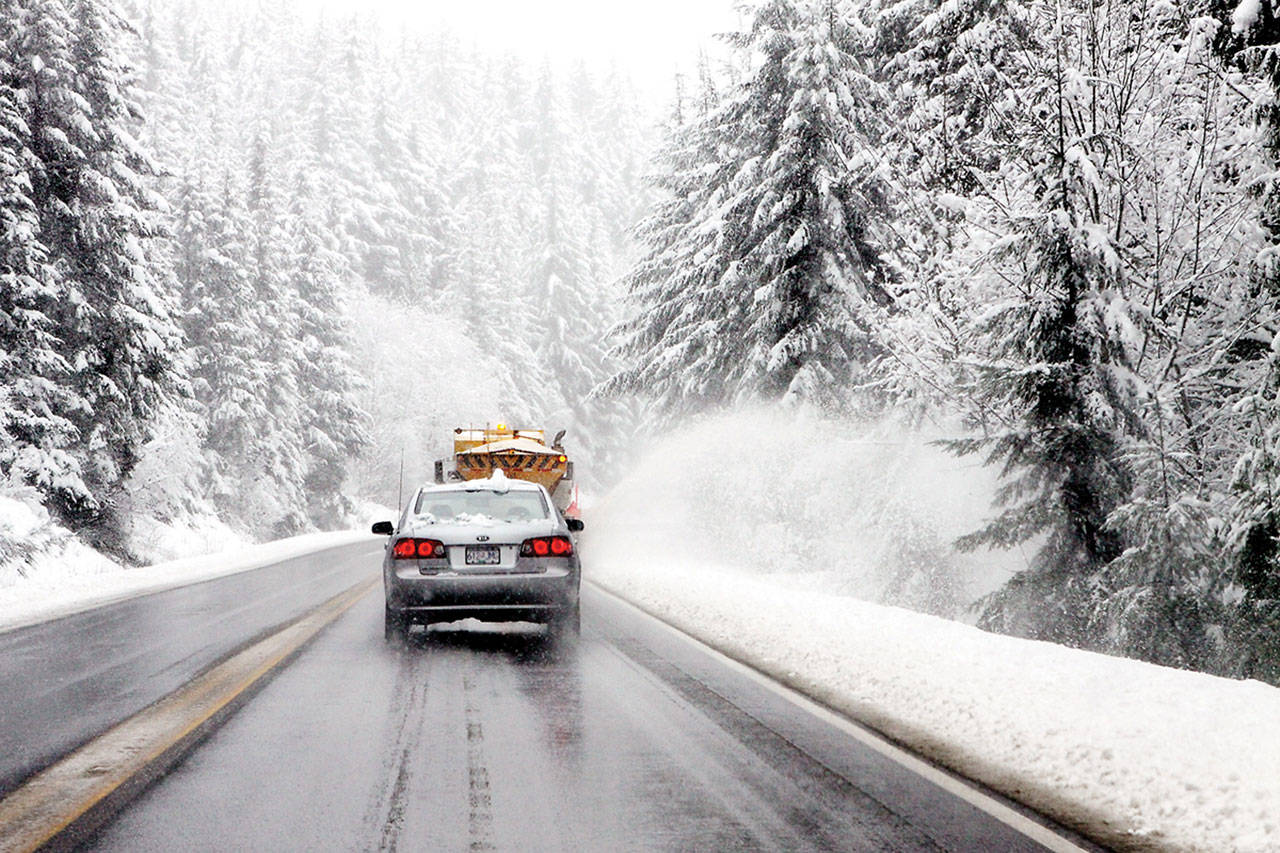Snow and adverse weather may be relatively light this weekend as thousands of travelers cross Washington state passes for the holidays, but forecasters are urging people to check conditions before they leave.
A winter storm will move into the mountains in three fronts beginning Wednesday and stretching through Friday, said National Weather Service meteorologist Danny Mercer. It is an El Nino type pattern, meaning the storm’s front will break and much of it will head south to California as rain. However, light snow is expected on Stevens Pass on Wednesday, though it is expected to remain too warm on Snoqualmie for snow.
That could change on Thanksgiving as the storm begins to get colder and stronger. It may produce a few inches of snow at White, Stevens and Snoqualmie passes.
“This does not look like a very heavy snow event, or anything out of the usual,” Mercer said.
The heaviest snowfall is expected on Friday. Mercer said the breaking up of the storm fronts makes it harder to predict how heavy they will be, but he said by the end of Friday there will likely be less than six inches of snow on the passes.
“All the passes will have some snow. The snow level may fall to 2,000 feet,” Mercer said.
Mercer said the best weather for travelers will be on Wednesday morning as opposed to later Wednesday, and if people can wait, coming back on Sunday may be the best bet. While he’s expecting between 2 and 4 inches, travelers should check pass conditions online or by calling 511.
“People need to pay attention to the forecast each day,” Mercer said. “… Definitely pay attention to the delays and current forecast before they take off as things are more likely to change a bit.”
The Washington State Department of Transportation is predicting that the heaviest traffic on Interstate 90 will be on Wednesday and Sunday as travelers leave and return to Puget Sound. Traffic is expected to be the heaviest eastbound on I-90 between 11 a.m. and 5 p.m. on Wednesday with congestion and stop and go traffic anticipated.
On Sunday, both eastbound and westbound lanes of I-90 will likely be the most heavily congested between 10 a.m. and 4 p.m.
Drivers should travel at slower speeds and accelerate slower in winter conditions and pay attention to traction advisories. The WSDOT also said that four-wheel and all-wheel vehicles do not stop or steer better on ice. Drivers should leave extra room between their vehicle and those in front.
Additionally, drivers should have emergency supplies like a first aid kit, cellphone charger, flashlight, snacks, warm clothes and gloves and chains in their vehicle, among other items which can be found on the WSDOT website.



